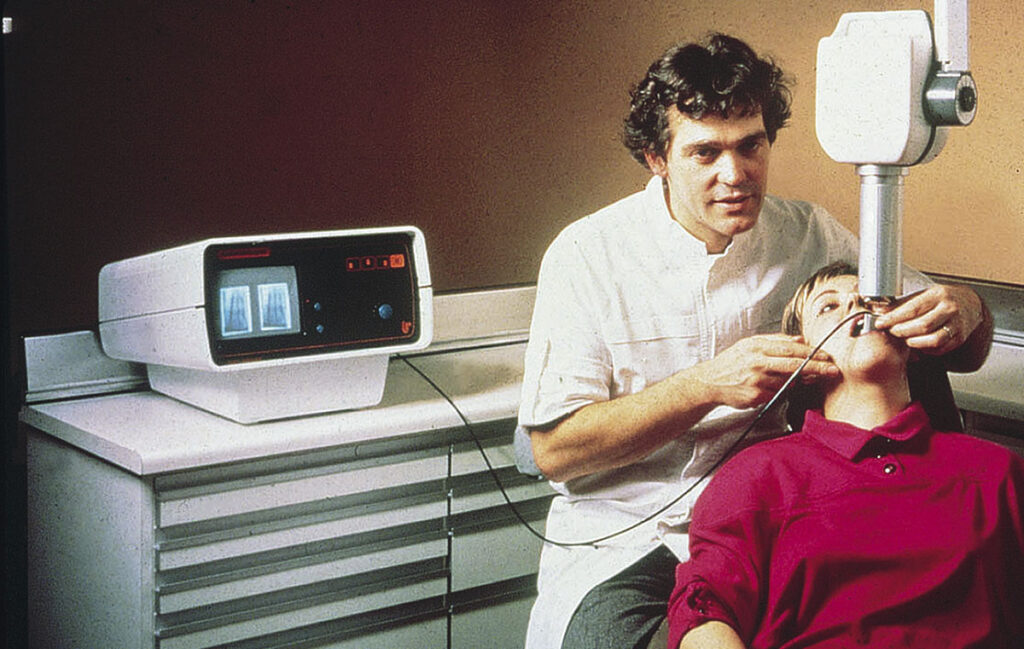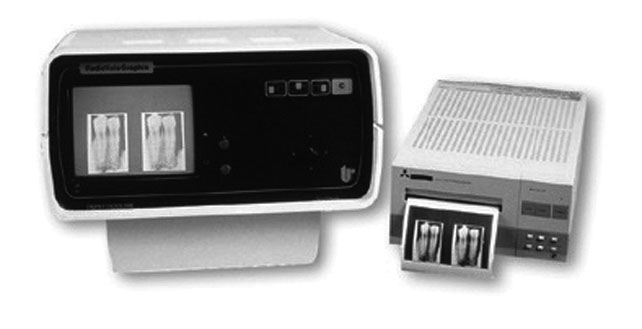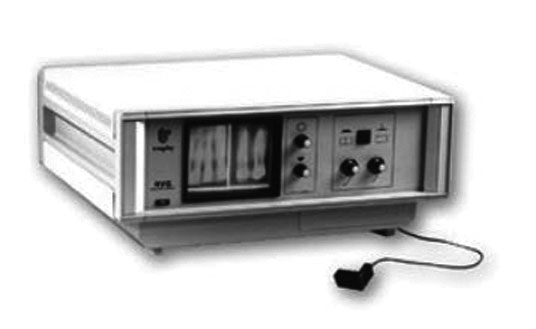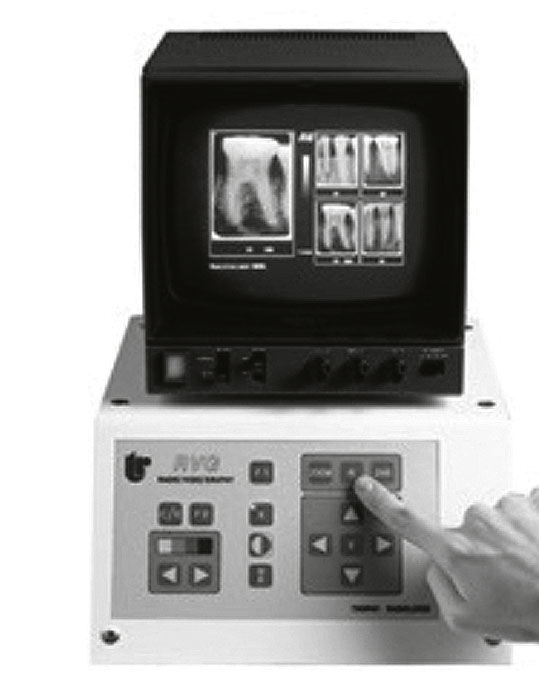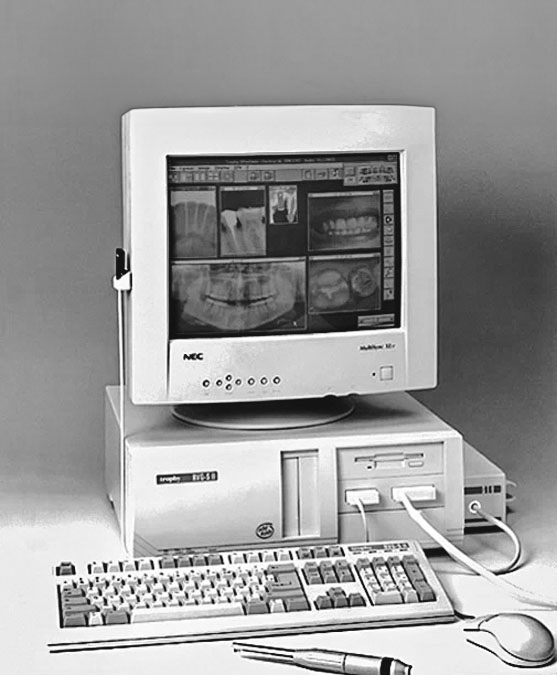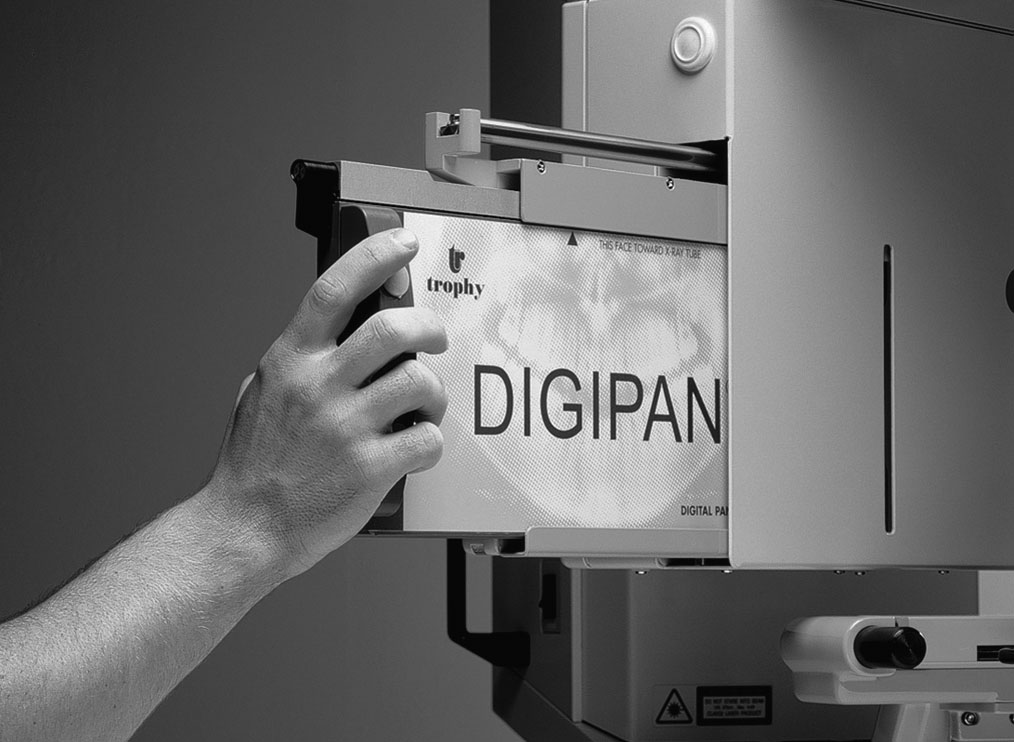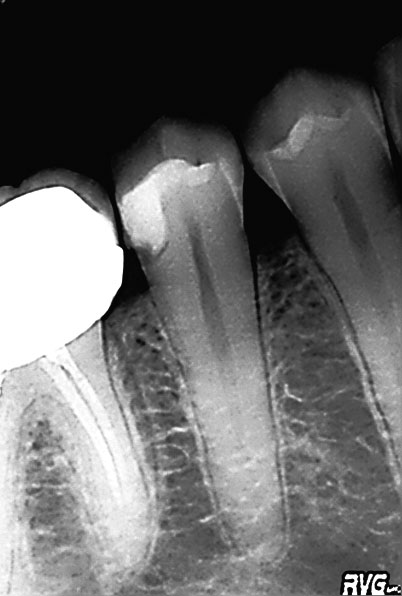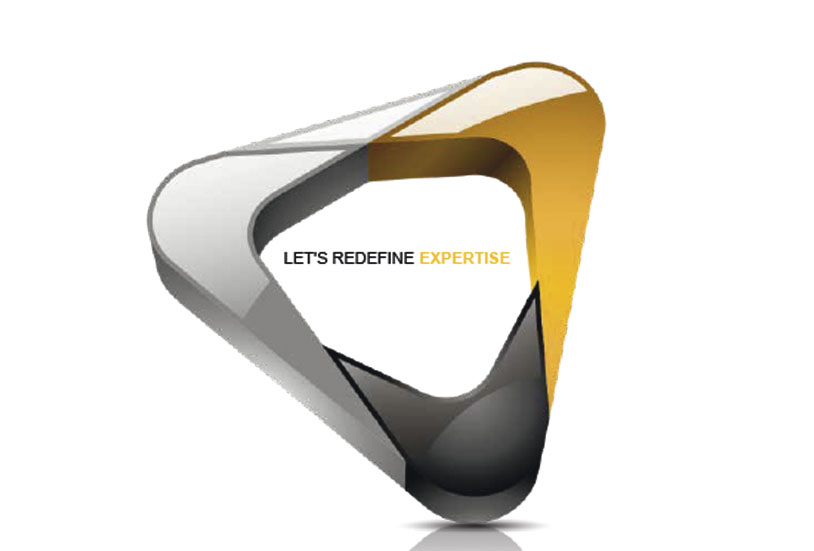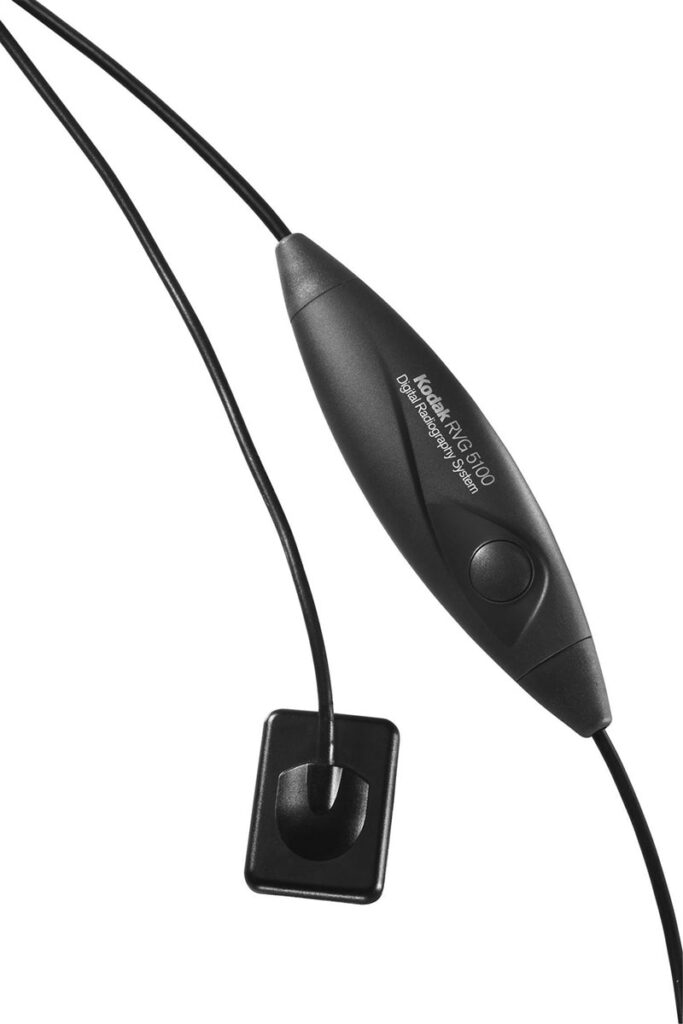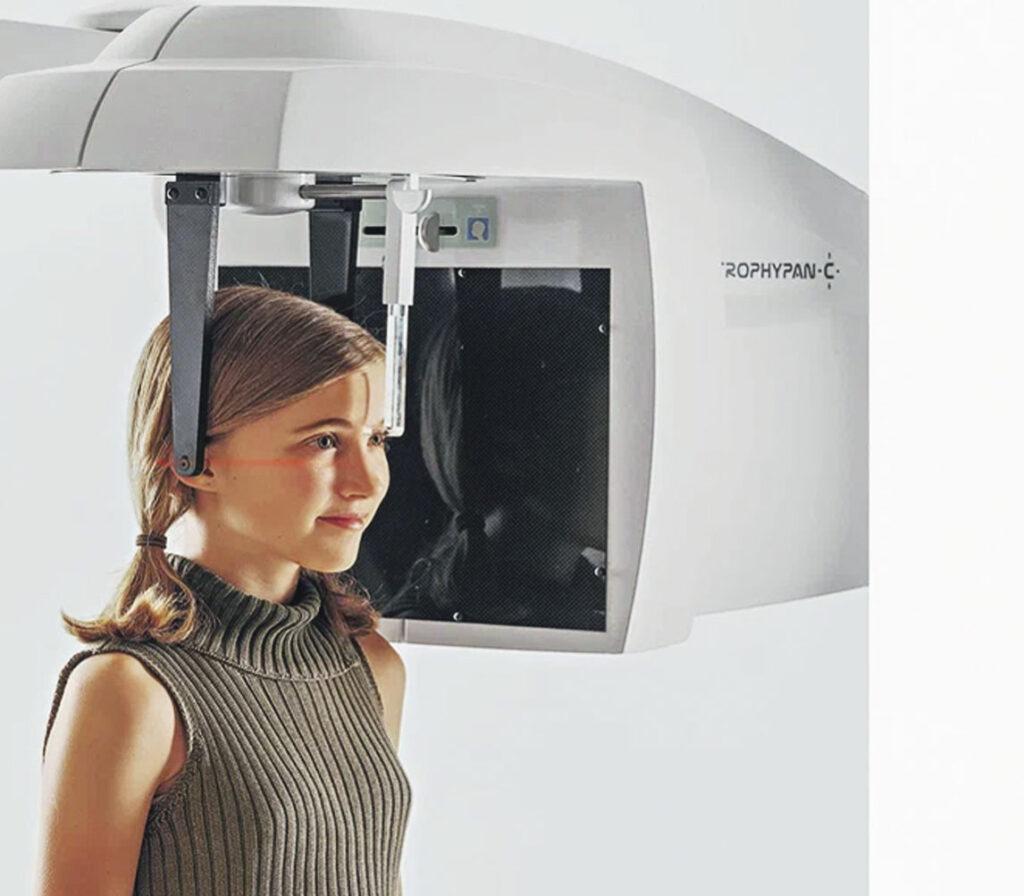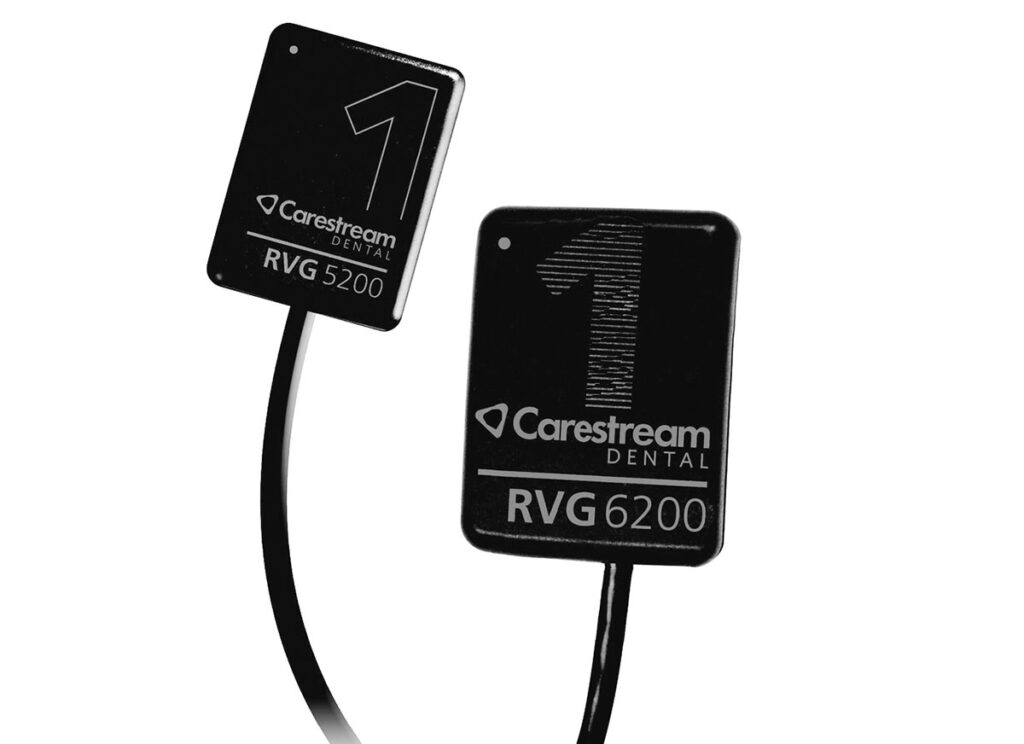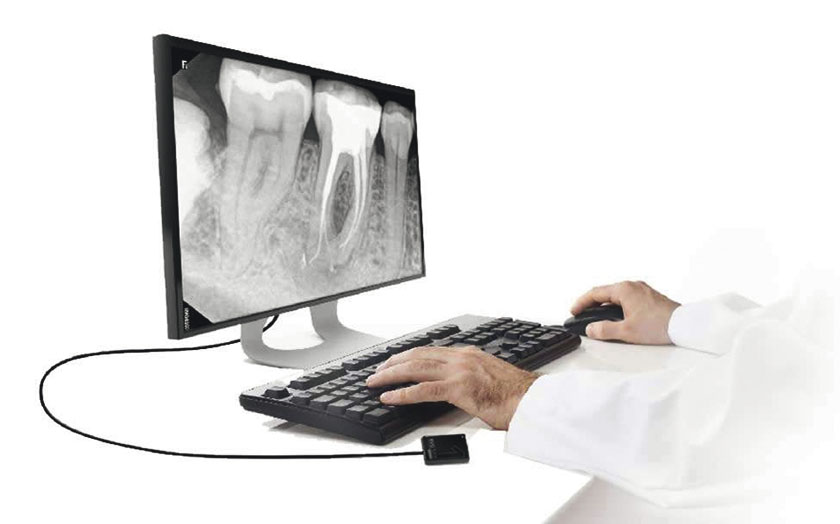Dental x-rays? No problem: just attach the sensor and you can view the image on the computer screen. For dentists and patients alike, dental x-rays have long been commonplace. But behind that is 40 years of development of RVG technology – radiovisiography.
Making x-rays on photographic film was learned more than a century ago. But doctors had to wait a long time for it to be manifested in a special laboratory, which was sometimes located in another department of the hospital. This has been a problem for dentists for many years. The ability to immediately see the image on the screen came only after the development of RVG technology, in which the film is replaced by a digital sensor.
1977 French dental student Francis Mouyen thinks for the first time about how to get snapshot X-rays. Due to the inconvenience of using the film, he fails the treatment.
1982 Dr. Francis Mouyen takes the first digital X-ray in his home using his daughter’s loose milk tooth. That same year, he patented a technology he called radiovisiography (RVG).
1983 Trophy Radiology (later to become part of KODAK Dental Systems and then Carestream Dental, the world’s leading manufacturer and developer of RVG systems) produces the first prototype of a radiographic system designed with RVG technology.
1987 Trophy introduces to the market the RVG 25000, the world’s first freely available digital radiography system for use in dental clinics. It consisted of an intraoral transducer, an electronic unit, and a monitor on which the image was displayed. The system was presented at the first European Congress of Dental and Maxillofacial Radiology in Geneva.
1989 The next system, the RVG 32000, brings Trophy a global commercial success. RVG was recognized by National Geographic magazine for France’s significant contribution to technology development around the world
1992 RVG S – the world’s first dental radiography system with the ability to connect to a personal computer – is launched
1994 Trophy introduces a computerized radiologist workstation to the market. A high-resolution RVG HDI sensor has been created.
1995 Trophy launches Imager, a portable digital radiography system that does not require a separate computerized workstation. In the same year, the world’s first digital Digipan cassette was released, allowing to modernize conventional film panoramic X-ray machines and connect them to computer systems.
1999 On the RVG UI digital intraoral system, for the first time, an image with a resolution equal to (and even superior to) the quality of images taken with film technology was obtained.
2000 Unident became the exclusive representative of the French company Trophy (now Carestream Dental) and still represents RVG technology in Russia.
2006 The Kodak RVG 6100 and 5100 systems are introduced – with new, more ergonomic, physician- and patient-friendly sensors.
2009 Kodak launches the world’s first Wi-Fi-connected sensor, the RVG 6500. Thanks to modern digital technology, the image quality remains as high as that of wired sensors.
2014 Sarestream Dental introduces the advanced RVG6200/RVG5200 sensors. The CS Adapt module included with these devices allows the clinician to easily customize the image viewing settings while working.
2023 TheRVG technology is used very widely these days, because digital radiography not only allows you to store and view images on computers, but also significantly reduces the radiation dose to the patient and the doctor. So Dr. Muijen’s idea will live on and serve all mankind for a long time to come!

